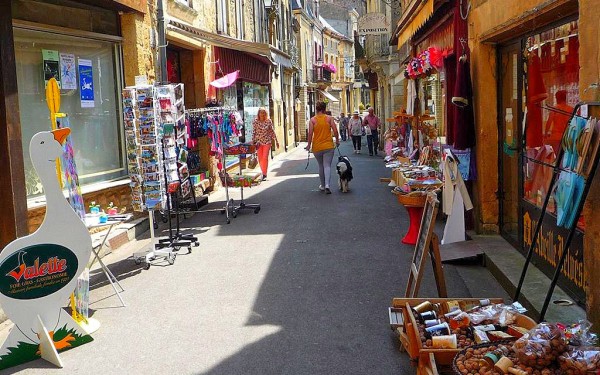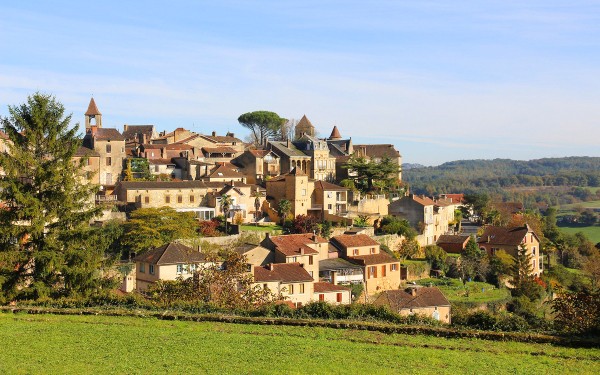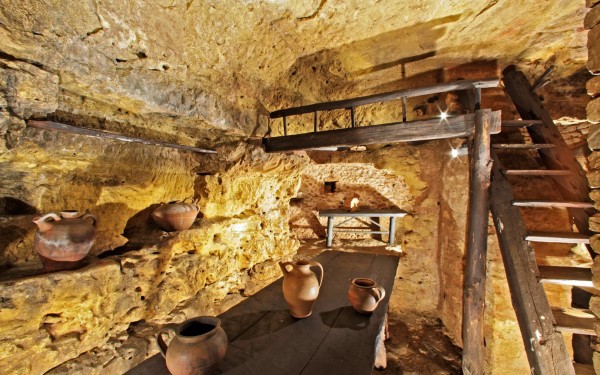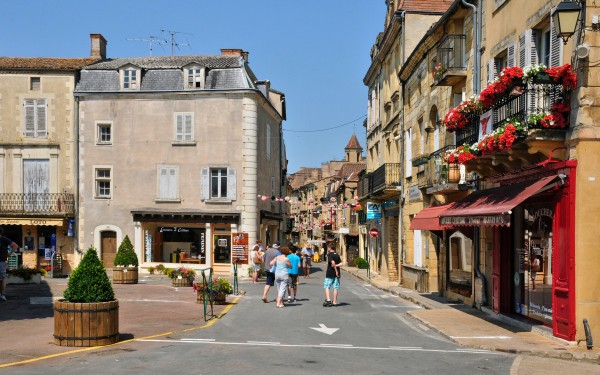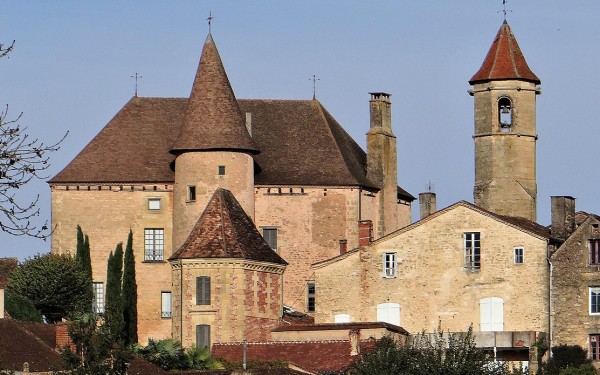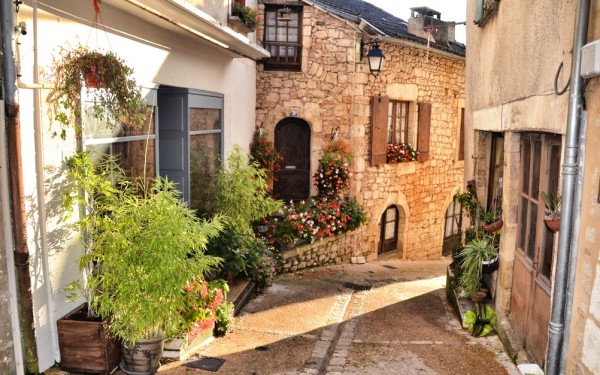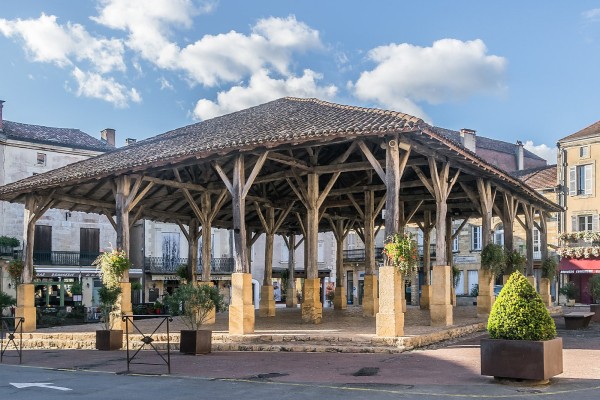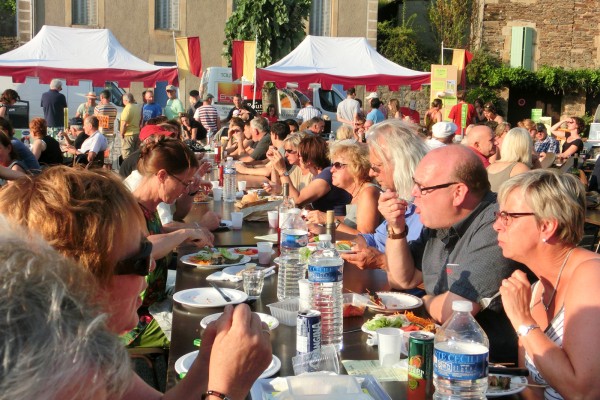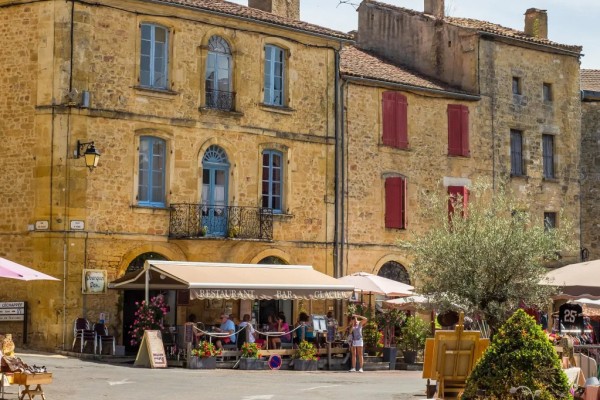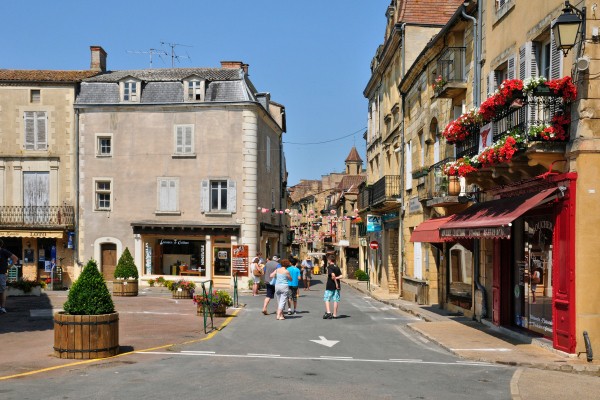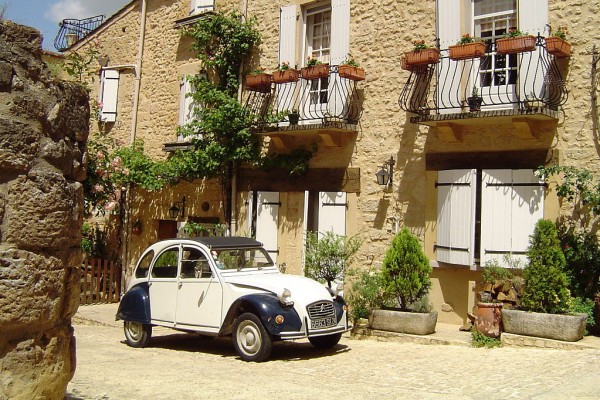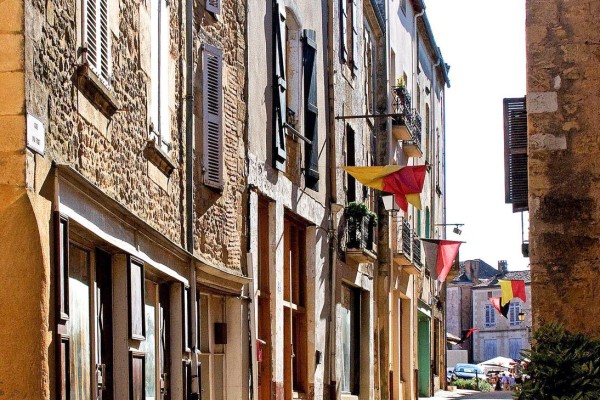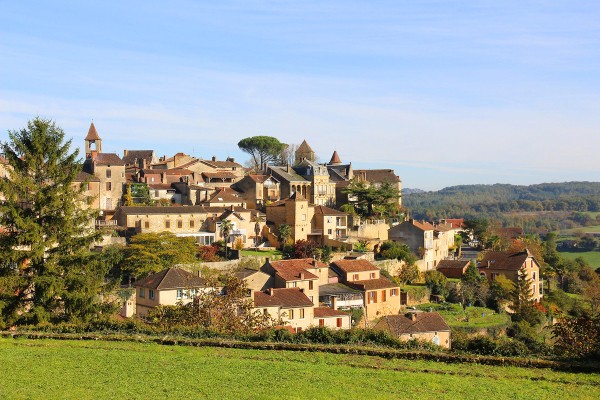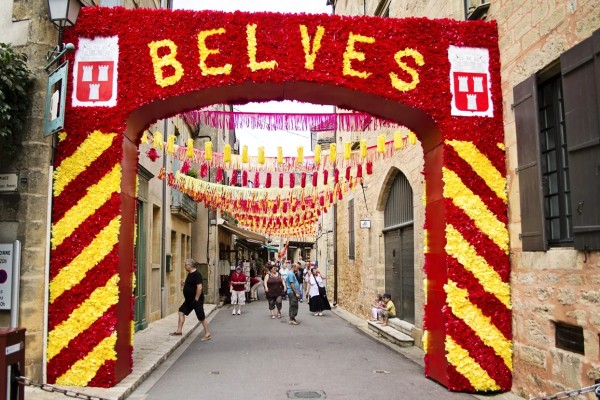The medieval village of Belvès lies in the heart of the Périgord Noir. Belvès is located between the towns of Monpazier and Sarlat in the touristic center of the Dordogne and is very popular among the many that celebrate their holidays here every year. The seven bell towers can be seen from afar. Belvès is a bastide and has the rectangular street plan characteristic of a bastide. The 15th century covered market hall is located in the center. On the edges of the square there are shops, bars and restaurants which are made from stone in the same golden color as the landscape surrounding the village. There are old cave houses located under the square. Belvès is a cozy village and has plenty to do and see during the long summer season. Stroll through the old town and visit the beautiful houses and nice artistic shops. Be sure to visit the Château de Belvès, Notre-Dame-de-l'Assomption, Notre-Dame de Montcuq and the night market.
The name Belvès
The name Belvès stems back from the Occitan bèl ves "beautiful view", which is also where the French word "belle vue" comes from. In all cases, it is a name that suits the village perfectly. The village is on an elevation, and you can enjoy a beautiful view from anywhere in the village. Not only the town itself has a beautiful name, all streets in the Belvès also have special names such as la Rue du Bout du Monde, which translates to the "street to the end of the world " or la Rue de l'Oiseau qui chante which translates to "the street of the singing bird".

